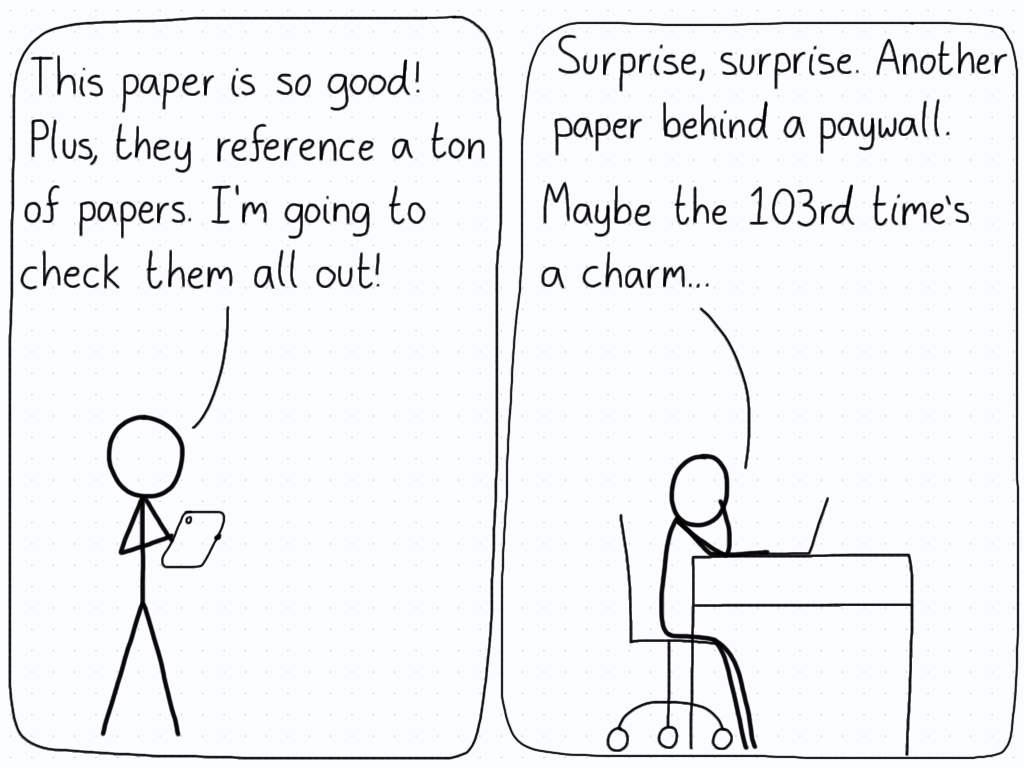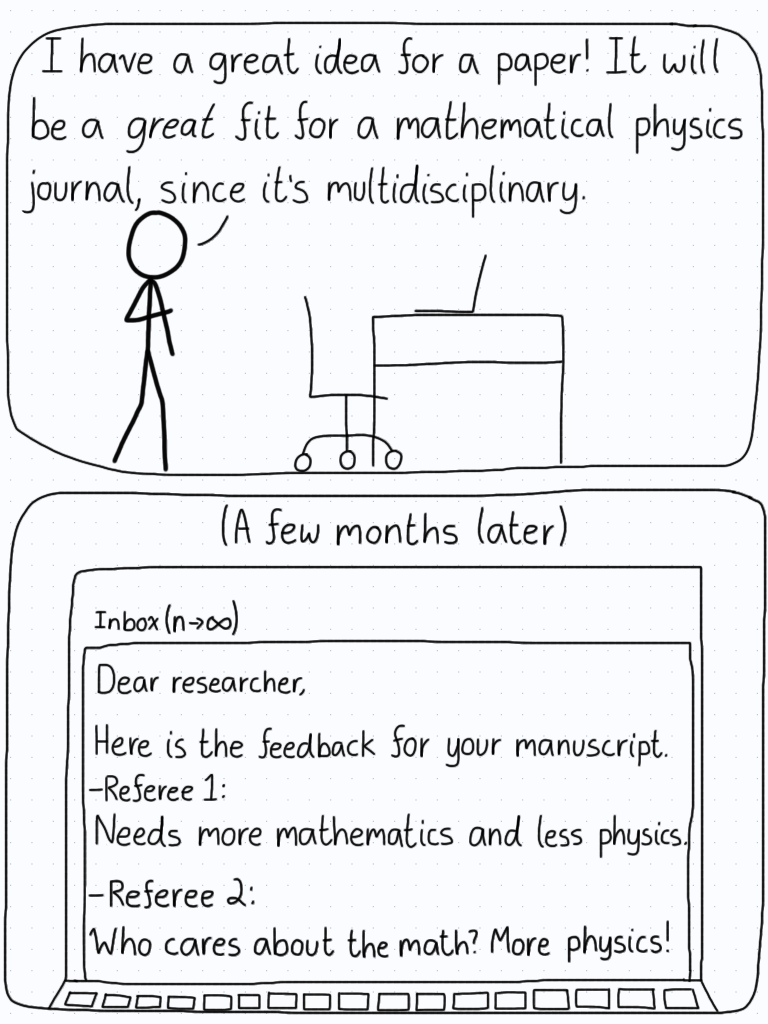 Comics about mathematics, science, and the student life.
Comics about mathematics, science, and the student life.
Change of Variables

This comic might make it seem like only physicists have these notational conventions, but don’t worry, those mathematicians are just as caught up in their ways!
03 Apr 2020Multidimensional

“Wait, just give me a chance!”
“Sorry, I’ve already projected you against one axis, so I’ve lost any other information I had of you.”
30 Mar 2020Tunable Theories

The difference is that, while flies die pretty quickly, tunable theories enjoy long, long lives.
25 Mar 2020Neutral Response

I understand that it is the polite thing to do. I just find it interesting how applause is more of a social convention in research presentations than an actual marker of quality.
23 Mar 2020Open Science

Like my undergraduate supervisor use to tell me, at least we have the arXiv for physics.
20 Mar 2020



